




Queen Bernie, Bernadette D. Anderson, 3-8pm Friday, Sept. 13 is being recognized and honored by Minneapolis, and her family, neighbors and friends with the designation of Russell Avenue North between12th and Plymouth Avenues as Bernadette Anderson Way.
A life-long resident of Minneapolis’ north side, Queen Bernie lived an exemplary life of service for and in Minneapolis. She was a community advocate whose career as a youth service provider spanned over 25 years.
A block party on Russell Avenue will feature a public unveiling of the Bernadette Anderson Way street sign, remarks from city and community leaders and colleagues, live music, food, and a day of family-focused activities.
Born May 21, 1932, Anderson was a foster care child of who dropped out of high school and married when she was 14 years old. She and her husband, Fred L. Anderson, had six children and began their large family in North Minneapolis’ public housing projects.
The family eventually moved into a home located at
1244 Russell Avenue North. Originally designated as public housing, Anderson negotiated directly with the property owners for an ‘option to buy’ lease making it possible for her to finally realize her dream of owning her own home. Despite her humble beginnings, Bernadette Anderson possessed enduring strength and a spirit of hope for the future. She would eventually complete her schooling earning a G.E.D. and go on to earn a bachelor’s degree in public policy administration from the University of Minnesota. Bernadette Anderson Way will be a reminder to those who knew her, of her commitment to creating empowering spaces for those most marginalized, and an inspiration to others to follow a similar path of learning and caring.
Anderson also created space for young people to explore and grow their passions, including opening her home to Prince when he was a teenager. Together with Anderson’s son André Cymone, and their Grand Central bandmates, the iconic sounds of Prince had their beginnings in Anderson’s
basement.
Her service to the community included her work at Ruth Hawkins YWCA (at North Commons Park), which spanned more than 22 years. Bernadette spearheaded many youth initiatives, including “Bernadette’s Place,” which focused on encouraging academic achievement.
The celebration on the 13th will commence at 3 p.m. and will feature a musical jam session led by Andre Cymone, with performances by an impressive lineup of local artists including Sue Ann Carwell, Pat Lacy from Sounds of Blackness, Sonny Thompson and Joe Lewis from Back to Black aka The Family, David “Batman” Eiland from Flight Tyme, Tewdros Suluki from Midwest Express, Homer O’Dell from Mint Condition, Daryl Boudreaux, Wenso Ashby, Pepe Willie and 94 East, Matt Fink from The Revolution, and Morris Hayes from The NPG.
André Cymone expressed his sentiments, stating, “In honor of my mother, we, the Anderson family, want to show some love to a community that gave us so much love and

was just as much a part of the success of my mother and so many others.”
Mayor Jacob Frey, Senator Bobby Joe Champion, Attorney General Keith Ellison, Council Member LaTrisha Vetaw and several others will be in attendance. Anderson’s dedication to community service extended to her roles on several boards, including the Phyllis Wheatley Community Service Board, the Minneapolis Public Schools PTA, and the board of KMOJ Radio. Her legacy of compassion and service will forever be celebrated on Bernadette Anderson Way.
Queen Bernie: A Tribute to Bernadette Anderson, May 21, 1932 – October 7, 2003
Insight News - Oct 13, 2003
Consistent with the African proverb that it takes a village to raise a child, Bernadette Anderson raised a village, her family and extended family were told during funeral services Saturday.
Revered as Queen Bernie, Anderson, 71, died last Tuesday. She was born May 21, 1932 and lived her entire life in Minneapolis.
The “Going Home” celebration was held at New Salem Missionary Baptist Church, Minneapolis, officiated by the Reverend Jerry McAfee, New Salem pastor, and with eulogy by the Reverend John Bowen, pastor of Mount Vernon Missionary Baptist Church.
Anderson was one of six daughters of Leland and Lillian Early. She had six children.
Anderson emerged as the grand matriarch of her family and as a political and cultural leader in North Minneapolis. She served in school PTAs, later worked for Minneapolis Public School and had a long career with the YWCA.
After retirement she worked through Minneapolis Urban League’s Seniors in Community Service Program and worked at the Urban League’s Street Academy Alternative School. Anderson also served as president of the Urban League Guild, a volunteer support auxiliary of the Urban Anderson’s legacy: Get some heart!
By Clarence Hightower, Executive Director, North YMCA
Insight News - Oct 20, 2003
On Saturday, October 11, several hundred people attended the Homegoing celebration of a friend to many of us, Bernadette
Anderson. Through testimonials and song, Bernadette’s spirit could be felt within the walls of New Salem Missionary Baptist Church. The poignant stories of her life’s journey revived the consciousness of all who stood witness. Being among those witnesses helped me to remember what it is like to lose a friend. As I sit here and reflect on the program as it unfolded,
Excerpt of Dec 30, 2002 Insight News Q&A Interview with Bernadette Anderson: Bernadette Anderson: Well [when] I was born…if you were Black, you were in one part of the hospital. If you were White, you were born in another. So, Minneapolis, has been segregating a long time. I can remember being in [sixth grade], doing a play. We went to one of the young ladies’ homes to practice. Her grandmother said she didn’t want any “niggers” in her house.
Al McFarlane: How did you feel?
BA: I felt bad. But, even at that point, I was belligerent, I told her grandma I didn’t want to come in her nasty house.
AM: You’ve always been part of the radical fighting community, haven’t you?
BA: I would say so. I’ve always been proud of who I am. So, I’ve always attacked anyone who felt we as people of color were [inferior].
AM: How’ve you been involved in civil rights in this community over the years?
BA: I protested against the school system years ago. At Lincoln Junior High School, we had problems with how students were treated. [There] wasn’t anything in their [studies] pertaining to African Americans.
AM: How did White people respond?
BA: They felt we were not necessarily a part of history.
AM: Was life between Black and White communities ever ugly? Did it get to where challenges got dangerous?
BA: When my children were teenagers there was a riot on Plymouth, and I remember a restaurant on Plymouth Avenue, and after that riot, everything was destroyed. There were confrontations. We weren’t allowed in certain sections of Minneapolis [and] didn’t dare go Northeast for anything.
AM: On Plymouth Avenue there were restaurants and stores you couldn’t go to.
BA: We weren’t allowed to go in, they didn’t want us in there and you knew that.
AM: What places in particular?
BA: I can remember Killroy’s.
AM: That was a restaurant right?
BA: It was a restaurant. I think that was one of the first places they destroyed as they went along and rioted.
AM: So, here is a restaurant, on the edge of the Black community — what is the center of the Black community now — right here on Plymouth Avenue, and merely what, maybe 30 years ago, 40 years ago, Black people could not go in the restaurant. It was take-out for Black people, or, what was it?
BA: I don’t even remember whether it was take-out, you just couldn’t go in there and sit.
They did not accept you. And, living in the projects. we were also segregated. White people lived on one side. I think all Black people lived closer to Phyllis Wheatley which was on Aldrich at the time. So, the projects were even segregated at that time.
AM: Despite this environment, a lot of good came from this community.
BA: We [had] fashion shows on East Hennepin [Ave.], at a hall we were allowed to use. When I went to Chicago for a national PTA convention I was in awe of all the African Americans [worked] in the stores, that didn’t happen here. I felt good about it and had a renewed energy to come back here and help change things.
AM: What’s your family lineage?
BA: My great grandmother, lived to be 99. My great grandfather moved to Ohio, I believe. He came up to Minnesota from the south, out of slavery. My children are in the process of looking some more

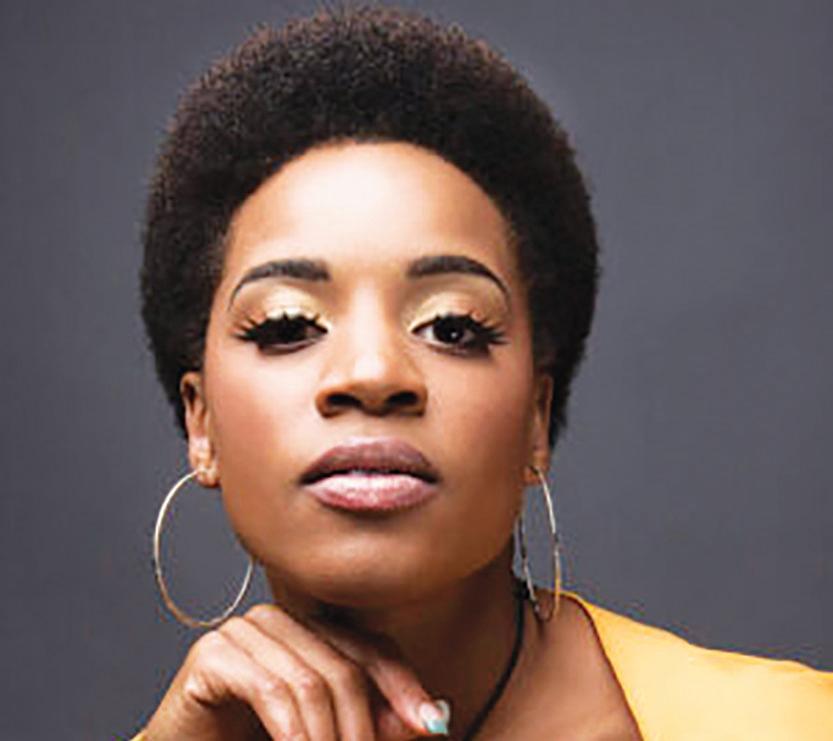
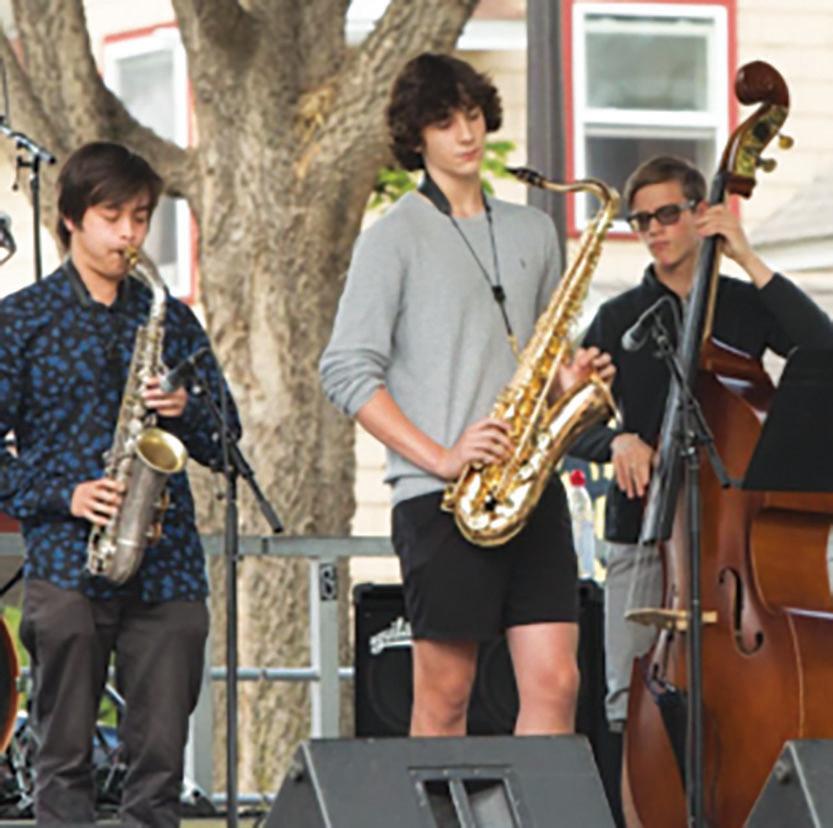



JazzFest founder Mychael Wright and Walker|West Music Academy Executive Director Braxton Haulcy recently announced the lineup for the 2024 Selby Ave JazzFest.
“We’re keeping things local this year,” stated Wright. “There’s plenty of talent from right here in the Twin Cities to have a full day of stellar performance.”
Headliner Jamecia Bennett: Vocalist, actor, and entrepreneur, this Minneapolisbased three-time Grammy Award winner has provided backing vocals for many of the greatest artists of all-time, including Stevie Wonder, Prince, and Aretha Franklin. When she is not gigging with her band “J. Movement,” Ms. Bennett can be heard as the new featured vocalist
for Sounds of Blackness.
L.A. Buckner & Big Homie: Arthur: “L.A.” Buckner is a performing musician, teaching artist, and producer from the Northside of Minneapolis. He holds a master’s degree in Percussion Performance from McNally Smith College of Music. Currently, LA serves as co-host for the two-time Webby awardwinning PBS music education YouTube series Sound Field. In August 2020, L.A. took iTunes by storm with the release of his project BiG HOMiE, which reached the #1 Jazz position within 24 hours of its release.
Ashley DuBose: Ashley DuBose is a recording artist and performer who is most widely known for her hit single, Intoxicated, and her compelling audition and performances on
Season 5 of NBC’s The Voice in 2013. The Minneapolis/St. Paul singer songwriter/actress has been singing and writing music since the age of ten. Ashley’s lyrics speak about love, life, happiness, hopeless romanticism, faith, and hope. Some of Ashley’s influences include Rihanna, Beyonce, Lauren Hill and Erykah Badu.
Capri Big Band: Keeping up JazzFest’s two-plus decade tradition of presenting the Twin Cities best big bands, we’re very excited this year to feature The Capri Big Band. This famed group’s mission is to interject a positive role model in the community by encouraging and improving musical opportunities within Minneapolis. Under the direction of Faye Washington, this 26-piece group regularly
performs throughout the Twin Cities as well as at the famed Historic Capri Theater in North Minneapolis.
Walker|West Music
Academy All-Stars: A longtime JazzFest tradition, this group features upper-level students and faculty members from the famed St. Paul music academy. They’ll be performing a variety of songs including traditional and progressive jazz standards.
“Walker|West is such an integral part of the Selby neighborhood,” stated Wright. “As we have since our first JazzFest back in 2002, we feel it is important to give the future of jazz a welcoming place to perform.”
Selby Avenue
Brass Band: As they have for going on 22 years, the Selby
Avenue Brass Band will kick
off JF24 with a grand NOLAstyle meander throughout the festival’s grounds. They know how to get things going with a little flair and style.
The rollicking group is led by Tom Wells, tubist, arranger & composer and music educator in the Twin Cities area. Tom’s compositions and arrangement fuel a band composed of enthusiastic and experienced musicians (including a couple of Grammy winners).
The 23 annual Selby Ave JazzFest will take place from 11:00 AM – 7:30 PM on Saturday, September 14 at the intersection of Selby and Milton in St. Paul. For more information, interested parties can visit the event’s website at selbyavejazzfest. com or Facebook page.
Admission is free. JazzFest sponsors and media partners include: AARP-Minnesota, Twin Cities Habitat for Humanity, Insight News, KBEM Jazz 88, The Levitt Foundation, MN Health Fairview, The Minnesota Spokesman-Recorder, Ordway Center for Performing Arts, St. Paul Pioneer Press, Ramsey County, Reconnect Rondo, Twin Cities RISE, US Bank, WFNU Frogtown Radio and Xcel Energy. The fesival is made possible by the voters of Minnesota through a grant from the Minnesota State Arts Board, thanks to a legislative appropriation from the arts and cultural heritage fund.

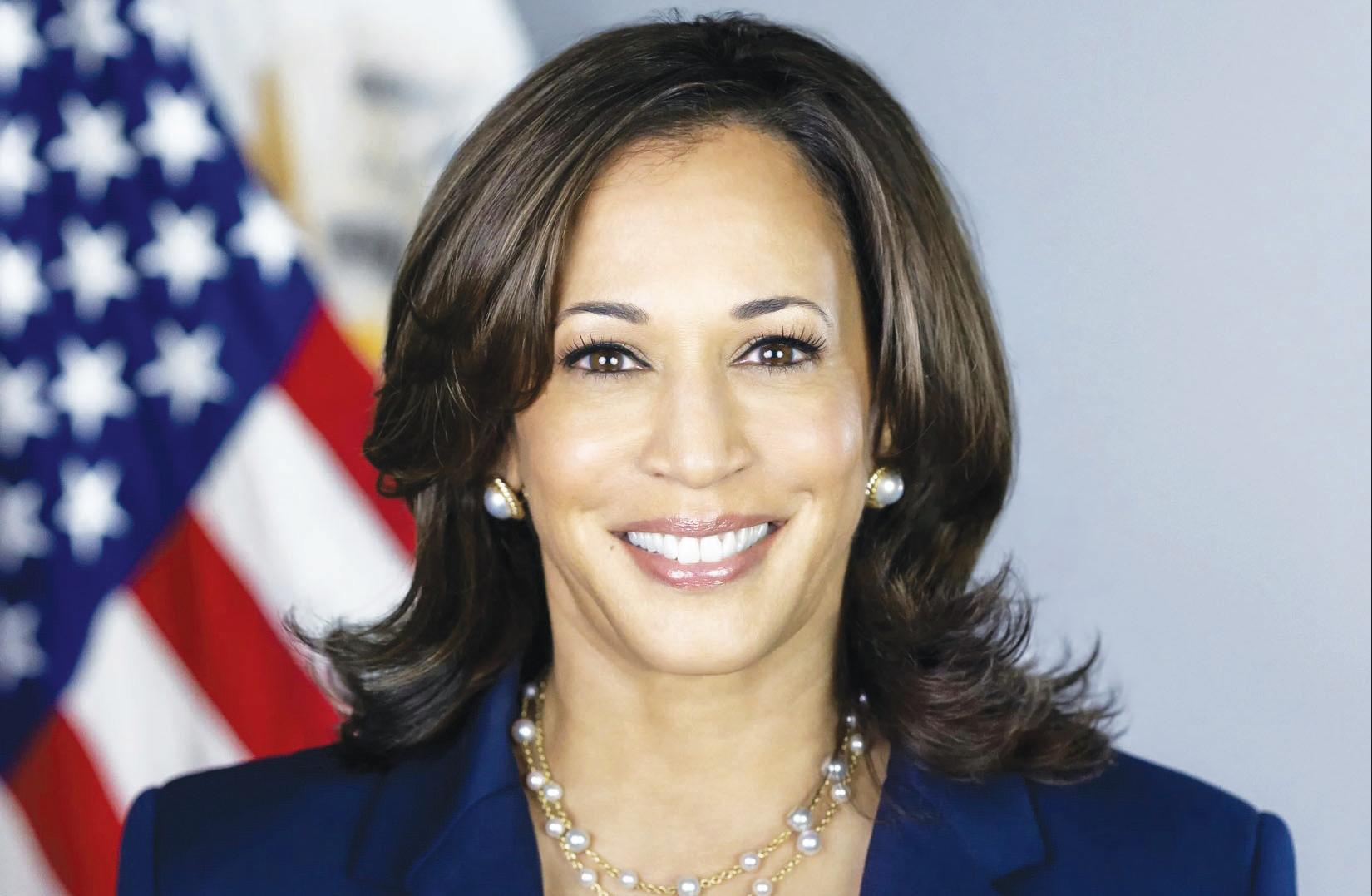
Harris proposes tenfold expansion of tax relief for starting a small business; sets a goal of 25 million
In the latest plank of her agenda to create an Opportunity Economy, presidential candidate Kamala Harris is presenting what she calls “a New Way Forward that ensures everyone has a chance to compete and a chance to succeed.”
In proposals announced Wednesday in New Hampshire, Vice President Kamala Harris proposed a dramatic tenfold expansion of tax relief for starting a small business and set a goal of 25 million new small business applications in her first term. Harris said she
believes that small businesses are the backbone of our economy, employing half of private-sector workers in America, doing trillions of dollars of business annually, and driving the American system of free enterprise that creates economic growth and innovation. But, she said, too often entrepreneurs face financial hurdles that are too high and prevent them from getting their business off the ground. On average, it costs $40,000 to start a new business.
Harris will propose expanding the startup expense deduction for small businesses from $5,000 to $50,000 to help meet the needs faced by American entrepreneurs when starting a business. This proposal would also allow new businesses to wait to claim that deduction until they first turn a profit in order to reduce their taxes. For example, a small business with $15,000 in earnings in its first year can deduct that, then save the rest for future years, or a small business who takes a loss in its first year can wait until future years to claim this deduction. Harris maintains that some regulation is critical for ensuring fairness, safety and stability, but that too often, unnecessary red tape makes it harder for small businesses to start, grow, and expand. Harris said she will propose cutting red tape in areas like: Making it easier for small businesses to file taxes by developing a standard deduction for small businesses to save entrepreneurs time and money; and,
New school year marks second year of universal school meals Lieutenant Governor Flanagan welcomes students back to school
By
A man with a history of driving under the influence was charged with criminal vehicular homicide Tuesday days after he rammed his car through a Minnesota restaurant’s outdoor patio where a group of medical professionals were celebrating after work, killing two people and injuring nine.
Steven Frane Bailey, 56, faces two counts of criminal vehicular homicide for intoxication and negligence, and nine counts of criminal vehicular injury. The number of charges could rise if investigators identify more victims, Hennepin County
Attorney Mary Moriarty said at a news conference Tuesday.
A 30-year-old mother of three who worked as a server at the Park Tavern in St. Louis Park and a medical staffer at a nearby hospital who was beloved by his colleagues both died after Bailey said he hit the gas pedal instead of his brakes.
Nine others were injured in the deadly crash, which left a Minneapolis suburb in shock that a pleasant evening dining outside could end in tragedy.

we’re making sure kids are ready to learn by providing free and healthy meals at school. We’re working together to make
By Annie Ma, Cheyanne Mumphrey and Sharon Lurye Associated Press
Racial differences in how schools discipline students received new attention 10 years ago, during a national reckoning with racial injustice.
A decade later, change has been slow to materialize.
In many schools around the country, Black students have been more likely to receive punishments that remove them from the classroom, including suspensions, expulsions and being transferred to alternative schools.
Those differences became the target of a newly energized reform movement


spurred by the same reckoning that gave rise to the Black Lives Matter movement. For many advocates, students and educators, pursuing racial justice meant addressing disparate outcomes for Black youth that begin in the classroom, often through harsh discipline and underinvestment in low-income schools.
The movement elevated the concept of the “school-to-prison pipeline” — the notion that being kicked out of school, or dropping out, increases the chance of arrest and imprisonment years later.
The Associated Press reviewed discipline data in key states to see how much progress has been made. Here’s what journalists found.
Gaps have narrowed, but Black students are still kicked out at higher rates
this school year a good one.”
“As a mom of a new middle schooler, I know there’s nothing like the energy of the first day of school,” said Lieutenant Governor Flanagan. “I am so grateful for the educators and school staff who have been preparing for weeks to welcome students back to school. By investing in crucial resources, from free meals and special education to literacy programs and attendance, we’re making sure students and schools have the resources they need for a successful year.”
For the second year in a row, Minnesota students will have access to free breakfast and lunch at school. In the first

The past decade has seen some progress in lowering suspension rates for Black students. But massive disparities persist, according to AP’s review of discipline data

“Bailey could have simply decided to stay home or take a Lyft rather than driving while intoxicated,” Moriarty said.
“This tragedy killed two people and injured several others, and it was entirely avoidable.” Moriarty did not know whether Bailey had retained an attorney on Tuesday. Calls to him and a

‘This
in key states. In Missouri, for example, an
Kamala Harris has had many roles and titles over the course of her political career.
Attorney General, Senator, Vice President and now Democratic presidential nominee.
But for the women who were initiated into Alpha Kappa Alpha Sorority, Inc. at Howard University in the spring of 1986, they know Kamala Harris as “line sister.”
“Greetings most gracious ladies of the upper, uppermost house of Alpha Chapter, Alpha Kappa Alpha Sorority Incorporated, Howard University, Washington, DC 20059,” they all chanted in unison.
Today, I sat down with a few fellow members of the Alpha Chapter of Alpha Kappa Alpha Sorority. More than 30 of Harris’ sorority sisters celebrated this historical moment. They traveled across the country to meet here in Chicago for the Democratic National Convention. And Monique Poydras, an organizer of the event, shares why her sorority sisters are here to support Harris.
“So, we have gathered here today because we are so

excited about our line sister, Kamala Harris, Vice President Harris,” Poydras said. “We’re here to celebrate her and also to support her in her nomination for president of the United States, and we’re looking at an individual who’s not only qualified, she’s qualified, overqualified for the role. And we couldn’t be more proud and humbled about our beginnings at Howard University.” Valerie PippenCoutee has known Harris for over 40 years, and before they were sorority sisters, they were best friends.
“We got closer and closer together almost every day, and what we ended up doing was the summer of ‘85 we decided to go to summer school,” she recalled. “So, we worked during the day and went to summer school at night, and that really was difficult, but we were together every night.” Pippen-Coutee continues to tell the story of how she convinced Harris to become a member of Alpha Kappa Alpha, the first Black sorority founded at Howard University.
“I remember I had pledged already, and I remember saying to her, ‘Hey, you should go out for the sorority. You should really do



By Ranjan Singh
Imagine a future where internet connections are not only lightning-fast but also remarkably reliable, even in crowded spaces. This vision is rapidly approaching reality, thanks to new research on terahertz communications technologies. These innovations are set to transform wireless communication, particularly as communications technology advances toward the next generation of networks, 6G.
I’m an engineer who focuses on photonics, the study of how light and other electromagnetic waves are generated and detected. In this research, my colleagues
and I have developed a silicon topological beamformer chip. Topological refers to physical features in the silicon that help steer terahertz waves, and beamformer refers to the purpose of the chip: forming terahertz waves into directed beams.
Terahertz frequencies are crucial for 6G, which telecommunications companies plan to roll out around 2030. The radio frequency spectrum used by current wireless networks is becoming increasingly congested. Terahertz waves offer a solution by using the relatively unoccupied portion of the electromagnetic spectrum between microwaves and infrared. These higher frequencies can carry massive amounts of data, making them ideal for the data-intensive applications of the future. Our chip takes a terahertz signal from a single

output beams.




source and splits it into 54 smaller signals, which are then guided through 184 tiny channels with 134 sharp turns. Each beam can transmit and receive data at speeds of 40 to 72 gigabits per second, many times faster than today’s 5G networks. With the help of artificial intelligence, we designed the chip to have a specific microscopic honeycomb pattern to form lanes for the terahertz waves. The array of channels sends out powerful, focused beams that cover the entire 360 degrees around the chip. This allows a phone or other wireless device anywhere around a Wi-Fi router or other communications device using the chip to receive the high-speed signal. We demonstrated the chip by splitting an input signal of a streaming HD video into four
Beamformers in wireless networks
Terahertz waves have a shorter range compared with lower-frequency signals used in 4G and 5G networks. Terahertz beamformers address this challenge by precisely directing high-frequency signals to ensure they reach their destination without loss or degradation. Beamformers are essential for the next generation of wireless communication.
Unlike traditional antennas that broadcast signals indiscriminately, beamformers focus signals in specific directions, boosting both efficiency and reliability. Our chip ensures that those beams provide coverage in all directions. This focused approach not only extends the
signal’s range but also improves its quality, even over long distances. Beamformers are likely to be crucial in managing stable connections by reducing interference as the world adds billions of connected devices.
A future with terahertz beamforming
The potential impact of terahertz beamforming chips on everyday life is profound. For example, these chips could make it possible to download a 4K ultrahigh-definition movie in mere seconds compared with 11 minutes over today’s W-Fi, or support immersive virtual and augmented reality experiences without any lag.
Beyond entertainment, they could make real-time holographic communication a reality, where people appear as lifelike holograms. Smart cities could use this technology to seamlessly coordinate traffic systems and emergency responses, while health care could benefit from remote surgeries where doctors control robotic instruments from afar. The
Ander son Q&A Anderson From 1
Ander son Anderson
Tribute
From 1
League. She served on the board of directors of Phyllis Wheatley Community Center, KMOJ/ Center for Communication and Development, and other community service institutions and organizations.
Anderson was celebrated for her leadership,
Ander son Anderson Legacy
From 1
several things stick in my mind.
First of all, I am reminded about the comments several people made about how Bernie “cussed.” Let me say that there are two ways to “cuss.” One way is when you use your
of that up. But they understand that [though] he was in slavery, he was proud. He lost one eye in the struggle during slavery,
her fighting spirit and her compassionate disposition toward children especially. She was a confidant for many. People felt comfortable unburdening their sorrows and doubts to her. They found patient reassurance, confident motivating support in her counsel.
Anderson’s home on Russell Avenue North at Plymouth Avenue became a shrine to the abundant genius of Minneapolis’ youth. Along with her son, Andre Cymone Anderson, the tycoons of the
mother’s or your sister’s or your family’s name in disparaging ways. Bernadette never cussed that way, nor would she tolerate you or me cussing that way. But there is another way to “cuss.” When you tell the truth boldly and unabashedly, without any degree of embarrassment. That is how my good friend Bernie “cussed.”
The second thing that struck me during her services was a comment made about
Reducing barriers to getting occupational licenses that make it harder for workers to work across state lines and for businesses to expand to other states.
family member, as well as an attorney who represented him in a previous case, were not returned Tuesday.
Surveillance footage captured Bailey pulling into the Park Tavern parking lot, driving past an open parking spot and hitting a parked car when he tried to back into that spot, a criminal complaint said. He then pulled out and accelerated toward the patio, barreling through a metal fence into a crowded area where patrons, restaurant staff and several children were gathered, court
Flanagan
From 3
it.’ She was like, ‘I don’t know. I don’t know what I want to do.’ I was like, ‘Look, you really need to do it.’ And she said, ‘I’m gonna do it.’ And so she did, and the rest is history.”
For many of Harris’ fellow members, getting people to the polls and Harris into the Oval Office are personal matters.
From California to Washington, D.C., her sorority sisters have been there every step of the way.
Pippen-Coutee, like many of her sorority sisters, had plenty of stories to tell. They spoke of fond memories as they moved through life together.
Black Students Black
From 3
all days in suspension in the 2013-2014 school year — the year Michael Brown was shot and killed by police in that state, days after he completed high school. Nine years later, the percentage had dropped to 36%, according to state data obtained via a public records request. Both numbers far exceed Black students’ share of the student population, about 15%.
And in California, the suspension rate for Black students fell from 13% in 2013 to 9% a decade later — still three times higher than the white suspension rate.
In Georgia, Black students make up slightly more than one-third of the population. But they account for the majority of students who receive punishments that remove them
but walked the streets very proud. We had no choice of what happened to us, but all Black people should be proud.
America’s music industry, Prince, Jimmy Harris and Terry Lewis and others enjoyed the protection and blessings of Anderson’s open door policy to neighborhood youth.
“We came out of the projects so I grew up always thinking about security,” said Fred Anderson, Jr., leading more than a dozen family members in paying tribute to their mother, grandmother, aunt.
“When I came back from military service we had moved. I am used to people
Bernadette’s legacy. Someone asked the question, “who will continue the legacy of strong advocacy that Bernadette carried for so many years?” The comment challenged everybody in the audience to, in Rev. McAfee’s words, “get some heart.” That’s exactly what it took to be the kind of advocate that Bernadette was. As I look back on her life I realize it would be disrespectful of me or any one of us who say we’re
Incentivizing state and local government to cut red tape in their own regulations. Harris said her administration’s goal is 25 million new business applications in her first term. This would exceed the 19 million new small business applications already seen under the Biden-Harris Administration – a record – which is 3 million more than Trump saw during his term.
records show. His gray BMW came to an abrupt stop after he hit several rocks on the patio. The server who died, Kristina Folkerts, was pinned under the car until police officers lifted it off her. She died at the scene. Gabe Harvey, who was at the restaurant celebrating with several colleagues from Methodist Hospital, was hit and pronounced dead later at a different medical facility. Tables, chairs, beer glasses and furniture were strewn about over an artificial grass turf mat at the chaotic scene. When police officers approached Bailey’s vehicle they heard him talking on the phone, prosecutors said. They reported hearing him say, “I hit
Understand where they come from and, if there is a mixture of color, it ain’t your fault. That’s what happened during slave time. AM: What does Africa mean to you? BA: Africa is a place
coming to a house, knocking on the door, and waiting to be invited in.
“So I was surprised to open the door one day and see these kids just walk on in and head to the basement to play music, head to the refrigerator to look for something to eat, and even head to the range and make dinner for themselves,” he told the standing room only audience at New Salem.
Community celebrants nodded smilingly, approvingly as they listened to younger and
advocates not to go forward with her same courage, strength, commitment and determination. I promise to do that.
Finally, the third thing that I was reminded of Saturday was the first time I met Bernadette Anderson. I had just settled into my position as Executive Director of the North Community branch of the YMCA on West Broadway, after having spent several years at the Southdale branch.
older members of the Anderson family weep and laugh through rich stories about how Queen Bernie affected their lives.
Pastor Bowen’s eulogy described what had been happening in this communal remembrance of the life and work of Queen Bernie. He said many family members were at Bernadette Anderson’s bedside when she died. He said her purpose was that they remember her works and gifts and remember that they also possess gifts, that they too have
work to do.
Queen Bernie died during the weekly live broadcast of the Public Policy Forum at Lucille’s Kitchen. Family members called to announce her passing to her friend and partner in politics, Liz Samuels. Samuels announced Andersons passing to the Forum audience at Lucille’s and to the live KMOJ listening audience. A moment of silence was offered, prayerfully acknowledging her departure from this realm.
I remember folks telling me that I needed to go across the street to the YWCA and meet Bernadette. Spike Moss told me, “you need to go over and meet Ms. Anderson.” Cozelle Breedlove told me, “you need to go over and meet Bernadette.” I met Bernadette. My first impression of her was that she was a big woman with a big voice. I don’t remember much about our conversation, but there was one thing she told me that day that I’ll never forget. As we concluded our meeting and I was preparing to walk out of her office, she said to me, “Boy, don’t you let those White folks mess with you.” And I said, Yes ma’am.” I will never forget those words, and never again will I let them folks mess with me.
Farewell, my friend, Clarence Hightower
Harris highlighted the need to help existing small businesses expand and the importance of investing in small businesses not just in urban or suburban hubs but throughout all of America – in middle America, rural America, and often overlooked and underserved communities. Harris said she will launch a small business expansion fund to enable community banks and Community Development Financial Institutions (CDFIs) to cover interest costs while small businesses are expanding for locating or creating jobs particularly in regions that have historically received less investment. This builds on her work as a Senator to create a new program to expand access to capital in underserved communities through CDFIs, as well as her work as Vice President to establish the Economic Opportunity Coalition, a first-of-its-kind private-public partnership to align tens of billions of dollars in investments in historically underserved communities. She said in her first term, one-third of federal contract dollars will go to small businesses by expanding contract opportunities for rural and other underserved small businesses.
the gas instead of the brake and went right through a thing” and “I’m probably going to jail.”
A preliminary breath sample showed a blood alcohol of .325%, which is four times the legal limit, Moriarty said.
Court records show Bailey was convicted of driving while intoxicated twice before, once in 2014 and again in 2015. Four Methodist Hospital nurses who were with Harvey on Sunday were injured. Two are hospitalized in serious condition, two sustained less serious injuries and another has been released, the facility said in a statement.
The Park Tavern restaurant and nearby Methodist Hospital have supported each other for years as pillars of a Minneapolis suburb. The
restaurant sent meals to the hospital during the COVID-19 pandemic as medical workers were overwhelmed. And those same workers would frequent the restaurant after shifts. Harvey and the group of nurses went to the Park Tavern that night to celebrate with one of their colleagues, who was leaving her role for a new position. Harvey worked as a Health Unit Coordinator at Methodist, and was remembered by colleagues as a dedicated worker and an empathetic person.
Christopher Wendt, a nurse at the hospital, said he spoke to Harvey just hours before his death. Wendt’s mother is paralyzed and currently a patient at the hospital. She was having trouble with the call
year of the program, breakfast participation increased over 40 percent, and lunch participation increased 20 percent compared to the prior year. An interactive map shows the increase in each New investments in K-12 education will also take effect this year, including teacher training efforts and a pilot program to promote school attendance and combat
“She might not remember this, but there was one time I visited her in Oakland, and we went shopping, and I was working, and I believe she had just become working in the District Attorney’s office. She kept saying, Pippen. She calls me Pippen. ‘Pippen, I need a blue suit. I need a blue suit.’ I bought her that blue suit.’” And as a line sister Inez Brown explained that they have been with Harris throughout her wearing many different suits.
“We have celebrated her along the way,” Brown said.
“When she was serving in Los Angeles, when she became the Attorney General, some of us were present at her swearing-in ceremony and celebration when she became a U.S. Senator we also celebrated with her in that
from the classroom. Some schools have taken a harder line on discipline since the pandemic Students who are suspended, expelled or otherwise kicked out of the classroom are more likely to be suspended again. They become disconnected from their classmates, and they’re more likely to become disengaged from school. They also miss out on learning time and are likely to have worse academic outcomes, including in their grades and rates of graduation. Nevertheless, some schools and policymakers have doubled down on exclusionary discipline since the pandemic. Calls for stricter discipline and more police involvement resurfaced in recent years, as schools struggled with misbehavior after monthslong pandemic closures.
In Missouri, students lost almost 780,000 days of class due to in-school or out-
moment. We were in the room when she took her oath and when she was running for president.”
“We galvanized and we did what we could do to influence and encourage people to register to vote and to support financially, because we know money speaks, and that is an important part of every election.”
What her fellow sorority sisters love most about Harris is her character, and for Pippen-Coutee, her laugh.
“I just want people to know how much of a genuine person Kamala is, how loving and caring and funny, like we both love to laugh,” she said.
“And that’s one thing we always had in common was laughter.
And I just remember how she and I would just look at each other, just start cracking up.”
of-school suspensions in 2023, the highest number in the past decade.
In Louisiana, Black students are twice as likely to be suspended as white students and receive longer suspensions for the same infractions, according to a 2017 study from the Education Research Alliance for New Orleans. Yet a new law goes into effect this year that recommends expulsion for any middle- or high-school student who is suspended three times in one school year.
Federal guidelines to address racial disparities in school discipline first came from President Barack Obama’s administration in 2014. Federal officials urged schools not to suspend, expel or refer students to law enforcement except as a last resort, and encouraged restorative justice practices that did not push students out of the classroom. Those rules were rolled back by President Donald Trump’s administration, but
Brown, who also helped to organize the event, wants people to know that at the end of the day Harris is a person too.
“And I think a unique lens for us is her line sisters, as we get to paint the human side of Kamala,” Brown said.
“People have only sort of known her in her public service, so they often wonder, ‘Is she really this? Is she really that?’”
“We are here to say she is authentic and she is genuine and she has never shifted that. No matter what role she has served in. We love her for that, and I think she absolutely loves us for being there for her as line sisters and not people who are just enamored with her space in life.”
Despite campaigning
civil rights regulations at federal and state levels still mandate the collection of data on discipline.
Severe punishments handed down for subjective reasons
In Minnesota, the share of expulsions and outof-school suspensions going to Black students dropped from 40% in 2018 to 32% four years later — still nearly three times Black students’ share of the overall population. The discipline gulf in that state was so egregious that in 2017 the Minnesota Department of Human Rights ordered dozens of districts and charter schools to submit to legal settlements over their discipline practices, especially for Black and Native American students. In these districts, the department found, almost 80% of disciplinary consequences issued for subjective reasons, like “disruptive behavior,” were going to students of color. School buildings were closed for the pandemic during
light that alerts medical staff when she needs assistance. Harvey came into Wendt’s mother’s room with a new call light. That act of service was their last interaction.
“He was such an amazing individual,” Wendt said. “He could not only put a smile on people’s faces, but he always went above and beyond.”
The Park Tavern is a “family-friendly destination” with bowling, arcade games, a restaurant and a bar, according to its website. In a written statement published online, the restaurant said it would partially reopen Wednesday in a special event.
Park Tavern owner Phil Weber told KARE-TV that Kristina Folkerts had a
longstanding connection to the restaurant. Before Folkerts’ mother died, she was also a server at the restaurant. She passed when Folkerts was 14, and restaurant employees came to the teenager’s aid and would occasionally babysit her. Folkerts is survived by three young daughters. Jacque Smith, a spokesperson for St. Louis Park, said that the city would recover. “We extend our condolences to the family and friends of those who were killed and injured, and to the many people who witnessed this traumatic event,” Smith said in a statement. “We know the St. Louis Park community will support one another in the aftermath of this tragedy.”
chronic absenteeism. Another $37 million has been dedicated to the Minnesota Reading to Ensure Academic Development Act, which will support literacy training and overhaul reading education in the state.
and running the country, Brown explains that in her time of need, Harris still found a moment to always have her back.
“I had brain surgery, and I talk about it because it is something real, and I realize it empowers me to support someone else who might be taking that journey,” she said. “I had just had surgery. Kamala called the hospital, and she was in the thick of her candidacy, but she made the time to reach out to me.”
Poydras knows that what bonds them is their shared experiences as Black women. It’s their sisterhood that connects them all.
“The founding of our illustrious sorority came at a time when we didn’t have anywhere,” Poydras explained.
much of the settlement period, so it’s hard to assess whether the schools have since made progress.
“We only had each other. So, we had to create our own organization so that we could be a part of something special. This is not, ‘Oh, you just, you know, you’re part of an organization in college,’ and then it ends. This is a bond for life, a commitment for life, and that’s what our sisterhood stands for.” And in case you’re wondering, Vice President Harris did indeed work at the McDonald’s on Georgia Avenue across from campus.
“Yes, it is true. She had to make money,” Brown said. “We all needed a job,” Brown and Poydras exclaimed at the same time.
Black students often receive more severe punishments than their white peers for similar or even the same behavior, said Linda Morris, a staff attorney at the American Civil Liberties Union. “Students of color are often not given the same benefit of the doubt that their white counterparts receive, and might even be perceived as having harmful motives,” Morris said. The Associated Press’ education coverage receives financial support from multiple private foundations. AP is solely responsible for all content. Find AP’s standards for working with philanthropies, a list of supporters and funded coverage areas at AP.org.

By Mavis Gyesi
Ph.D. Candidate in
Black African immigration to the U.S. has exploded over the past few decades. Today, there are about 2 million Black African immigrants – up from 184,000 in 1990. Black African immigrants now make up 42% of the country’s foreignborn Black population, just behind Caribbean immigrants.
While large metropolitan areas typically see the biggest shares of African immigrants, populations are also growing in rural areas. In Iowa, for example, 17% of foreign-born residents in 2022 were born in Africa, compared with just under 3% in 1990.
As a Ph.D. candidate in the Department of Educational Policy and Leadership Studies at the University of Iowa, Mavis Gyesi researches the educational experiences of African immigrants in U.S. high schools and their transition to college.
In a working paper, Gyesi interviewed 13 African immigrant students in Iowa high schools who come from different cultures and speak different languages. She found that many of them take advanced courses in high school and aspire to go to four-year colleges, busting what research has shown to be stereotypes about African students as academically unmotivated or likely to fail.
In this Q&A, Gyesi addresses the research, including wide gaps, about African immigrants’ educational experiences and achievements.

What myths exist about African immigrants and their educational attainment? Research shows that in K-12 schools, African immigrant children sometimes experience negative stereotyping and marginalization, with some students reporting that they think most Americans view them as underachievers and primitive, based on their accent, ethnicity, nationality and skin color. These low expectations from their teachers often follow Black immigrants in college, too. However, research also points out that these children are resilient and learn how to navigate schools that are culturally and linguistically
different from the schools in their countries of origin. There is a gap in data about African immigrants’ achievement in K-12 schools, largely because in most datasets, they are included in the same demographic as all Black students, immigrant and nonimmigrant alike. My research aims to separate these groups and find out how their needs and achievement levels may differ. However, there is some data that dispels the myth that African immigrant children cannot – or do not want to – aim high in their education. Research shows that African immigrant students view college as an important
steppingstone to achieving their career goals and having a higher quality of life. In my study, 12 out of the 13 students interviewed reported taking Advanced Placement classes. A few planned to participate in dual enrollment programs to earn college credit. “I thought AP classes would be the hardest things ever, but they’re really not that difficult if you’re paying attention,” one student told me. African immigrants are also highly educated as a whole. According to the Migration Policy Institute, subSaharan African immigrant adults in the U.S. have higher levels of education than the foreign-born population in general. In 2019, 42% of sub-
Saharan African immigrants age 25 and older held a bachelor’s degree or higher, compared with 33% for all foreign- and U.S.born adults combined.
What educational values do African immigrants bring to US institutions?
Families and community networks play a vital role in African immigrants’ academic success. The involvement of many adults has been shown to play a significant role in students’ college readiness.
Using an Iowa school district as a case study in my research, I used Ubuntu and Harambee philosophies to explore the college-going




decisions of children of African immigrants, including those born in the U.S. Ubuntu and Harambee philosophies emphasize the oneness, community, interdependence and support networks that exist in African communities. “Ubuntu” comes from the Zulu and Xhola languages in South Africa, and “Harambee” is Swahili.
One student spoke about how her family encourages her to do her best in school and pursue more than just one college degree. One relative in particular told the student he “believes the hard work will be worth it in the end.”
What’s a major finding from your study?
The majority of African immigrant students I interviewed aspire to enroll in four-year universities. And they were specifically interested in Ivy League institutions. However, most of the students indicated that they needed more information about the college-going process. Teachers and counselors can make sure African immigrant students learn about the process of applying for college early. This includes things like informing them about the cost of college and scholarship opportunities.
Mavis Gyesi does not work for, consult, own shares in or receive funding from any company or organization that would benefit from this article, and has disclosed no relevant affiliations beyond their academic appointment. This article is republished from The Conversation under a Creative Commons license.

Project 2025 is Donald Trump and JD Vance’s plan to remake the federal government if they win. It would:
Use Civil Rights-era laws created to address discrimination to instead benefit white people – Axios, 4/1/24



Gut the Affordable Care Act, which will raise health care costs and threaten health care coverage for millions of Americans – AP News, 11/27/23
Cut Social Security and Medicare Americans have earned – Washington Post, 2/9/23
Ban abortion nationally – New York Times, 2/16/24



By Texas State Representative Ron Reynolds
Governor Abbott’s recent announcement about the removal of almost 1 million voters since 2021 is reminiscent of our nation’s darkest times.
This is Jim Crow 2.0, plain and simple—a modern-day attempt to suppress the voices of Texans who are already marginalized.
As a state representative and a proud member of Alpha Phi Alpha, the same fraternity as Dr. Martin Luther King Jr., I am outraged that we are still fighting the same battles Dr. King and many others fought decades ago. They marched, protested, and sacrificed so that every American could vote. Yet here we are, in 2024, still struggling to protect this fundamental right. Governor Abbott’s actions go beyond what he claims is “safeguarding” our elections. Let’s be clear: federal and state laws require regular maintenance of voter rolls to ensure accuracy. He is using the pretense of safeguarding against illegal voting as a rationale for a widespread purge that will unfairly impact communities of color, seniors, and low-income Texans. These are the same people who have historically faced barriers to voting, and now they are being targeted once again. This is voter suppression at its finest, and it is a direct attack on democracy.
The impact of these purges is far-reaching. When nearly a million people are removed from the voter rolls, the result is not just a more streamlined list—it’s a list that is disproportionately whiter, wealthier, and more

likely to support the current administration. This is not a coincidence but a deliberate move to disenfranchise those less likely to vote for Governor Abbott and his allies. By framing this as a crackdown on illegal voting, the governor attempts to undermine trust in our elections. The truth is, this isn’t about illegal voting. It’s about power—maintaining it, consolidating it, and keeping it out of the hands of those who dare to challenge the status quo.
Texans cannot let
this stand. We cannot allow our state to be dragged back to a time when voting was a privilege reserved for a select few. We must fight back against this anti-democratic agenda with everything we have. The first step is to ensure that you, your family, and your friends are registered to vote. Doublecheck your registration status, make sure your information is current, and encourage others to do the same.
To protect our right to vote, we must be vigilant
and proactive and refuse to be silenced. I will continue to fight for the passage of the John Lewis Voting Rights Advancement Act and the Freedom to Vote federal legislation by Congress. Checking our registration status is only the beginning. We must also turn out in force on November 5th. If we vote in large numbers, our voices cannot be ignored. Let’s send
Governor Abbott and his associates a clear message that we will not be swayed, silenced, or stand idly by while our
rights are stripped away. This is our state, our democracy, and our future; we will fight for it with everything we have. Governor Abbott’s voter purge is a stark reminder that the struggle for civil rights is far from over. It underscores the persistence of oppressive forces willing to go to any lengths to retain their grip on power. However, it also reawakens our strength, resilience, and determination. We have faced such challenges before and emerged victorious,
and we will do so again. As Dr. King famously said, “The arc of the moral universe is long, but it bends toward justice.” This arc only bends when we actively push it, fight for it, and refuse to surrender. Let us roll up our sleeves, get to work, and propel that arc toward justice once more. Let’s fight for our right to vote, for our democracy, and for the future of Texas. United, we will ensure that every voice is heard and that our state progresses forward, not backward.

The Vikings have big plans for an energized Aaron Jones: He feels like he’s just entering his prime
By Dave Campbell AP Pro Football Writer
Aaron Jones has begun his eighth NFL season, approaching a new team in Minnesota and his looming 30th birthday in December with the aplomb a running back in the NFL needs these days to stay healthy and relevant.
He’s serious about trying to make the second act of his career as long and productive as the first.
“I feel like every year, I’m getting better and better, and last year I felt like I was just about to start entering my prime,” said Jones, whose 2023 season with Green Bay was limited to 11 games because of hamstring and knee injuries.
Though Jones emerged from all that extra time in treatment with a remarkable surge down the stretch, rushing for 584 yards over the last five games including two in the playoffs, the Packers followed the script for salary cap
management and released him after he balked at a steep pay cut for the second consecutive year. The rival Vikings, who ranked 29th in the league last season in rushing yards per game and tied for 27th the year before, swiftly and eagerly picked him up.
“Those last five kind of showed, like, hey, the game’s slowing down a little more and more for me,” Jones said after practice on Monday. “I can see different things, and I’m able to hit different holes or set dudes up the way I want to, versus
maybe before I hadn’t been able to because the game was still a little fast.” Most running backs don’t get the opportunity to translate such improved acumen and increased awareness into more on-field success at his age because teams often decide they’re not worth the price for all the pounding they’ve taken to date in such a pass-driven era. Jones, who will turn 30 on Dec. 2, has been determined to surpass and even smash the average length of









career at his position. He said he has studied durable predecessors in the game like Emmitt Smith and Frank Gore and even asked new teammate Harrison Smith, who at 35 is the oldest active defensive back currently on an active roster in the NFL, for advice on stretching techniques.
“The other day, it was an ongoing question in the locker room: ‘How much money would somebody have to pay you right now for you to stop playing football?’ And I was like, ‘Pretty much like no amount of money,’” said Jones, who signed a one-year contract worth $7 million. “I feel like I have a lot left in the tank. I feel like I could play eight more years.”


Jones missed a total of four games over the four previous seasons before 2023, so he’s had a relatively healthy run with the Packers since he was drafted in the fifth round out of Texas-El Paso in 2017. But he’s fully cognizant of the fragile nature of his occupation. He raved about the proactive approach the Vikings’ medical staff applies to player health, with an individualized pre-practice routine — call it “prehab” — for injury prevention that he started on his own in the summer.
“They were like: ‘We were already thinking about that. We’ve already got a card written up. You just tell us the body part, and we’ve got it,’” Jones said, later adding: “I picked my hammies. I picked my knees. I picked my ankles. Let’s warm it all up.” Jones said this was the first offseason that he’s done this type of work. He said he feels far more fresh entering this September than he did last year.
“It’s always an experiment, every year,” Jones said. “Just when you think you’ve got it, you don’t. It’s an evolving situation.”
What ought to help keep Jones on the field is the presence of third-year backup Ty Chandler, who rushed for 461 yards and three touchdowns last season and overtook Alexander Mattison as the starter down the stretch. The Vikings could well wind up splitting snaps evenly between them.
“I’m excited to be his running mate,” Jones said. “I know he’s going to do great things this year, and I’m going to push him and be his biggest cheerleader.” The Vikings have big plans for Jones, though, given his pass-catching skill and ability to thrive with a variety of play calls. His leadership and maturity prompted coach Kevin O’Connell to declare that Jones looked like he already has played with the Vikings for years.
“He’s just a good runner,” offensive coordinator Wes Phillips said. “He sees the field really well. He sees a lot and can tell you real time what he’s seeing and why he made a certain cut, so just having another talented back there is also a bonus for us. The offensive line looks a lot better when you have good runners back there.” AP NFL: https:// apnews.com/hub/NFL

By W.D. Foster-Graham Book Review Editor
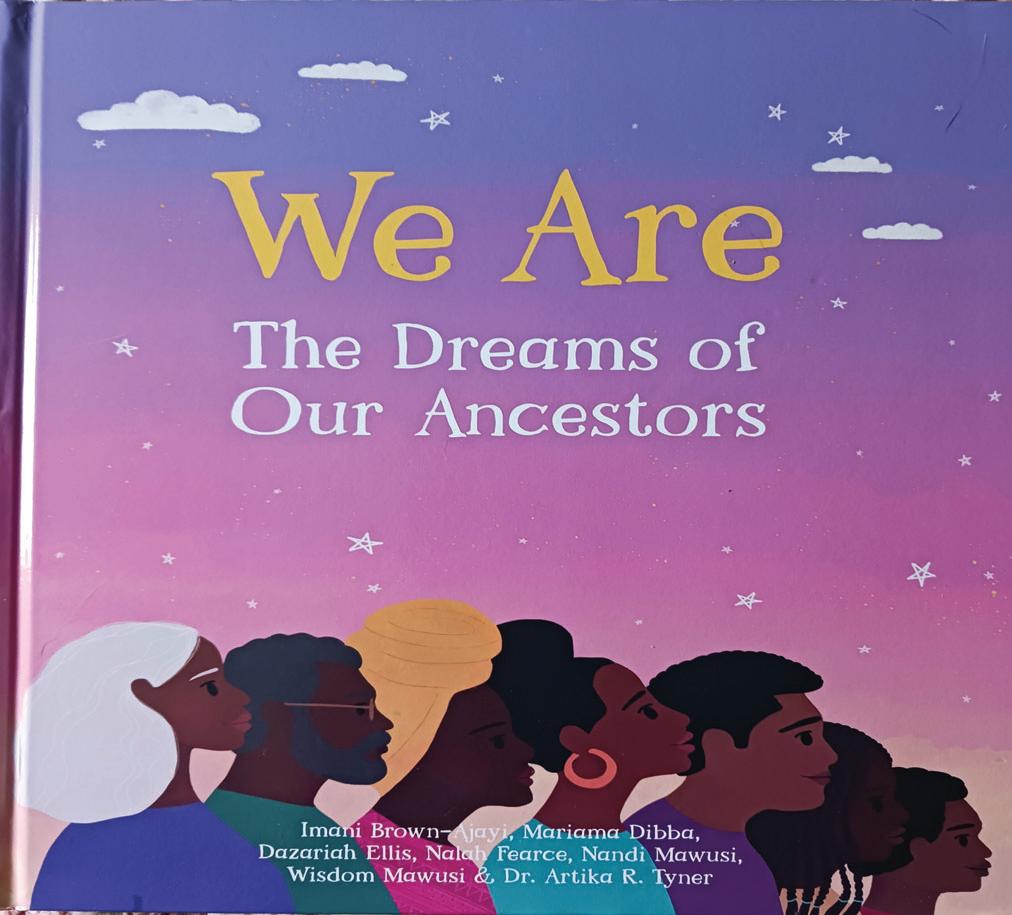

By Troy Johnson
By Matt Forté
A Tyndale Kids Title 2024 HEIRLOOM BOOK CLUB AWARD WINNER
Celebrate what your hair can do! This joyful, rhyming picture book invites diverse girls and boys to embrace their natural hair with an uplifting reminder of their self-worth.
My hair has roots from many places under the sun, telling the story of my ancestors and where I come from. I can shake my hair like

a baby with a rattle, or cut it all off to support my friend’s battle.
What can your hair do? From cool curls to crisp fades, from long locs, to beaded braids, bright joyful illustrations of diverse children burst from each page inspiring self-love and positive selfesteem. But hair love is more than knots, locs, and mohawks.
Discover the power of cutting your hair in solidarity with a sick friend or celebrating your heritage with hairstyles from your ancestral roots.
My Hair Can is an encouraging reminder for young readers about loving their hair, respecting differences, and celebrating their God-given uniqueness.
Features rhyming text perfect for read-aloud book Represents
hairstyles of boys and girls
Builds positive affirmations, confidence, and self-esteem
Emphasizes hair connection to ancestral roots
Empowers solidarity with friends
Highlights each child’s God-given uniqueness
Includes delightful and colorful illustrations
“Forte’s picture book reminds kids to not only see their hair as wonderful creations but also to see their peers as uniquely created too. It’s a call for kids to cut through the lies of the enemy with a thankful, joyful heart and to be confident in God’s extraordinary design.” –Heriloom Book Club Review Excerpt Inspire children of multiple ethnicities (ages 4–7) to wear their hair proud.









attended a Cousins Party, hosted by two of my cousins. My mother and her five siblings have all passed away as of February of this year, and we wanted to have an occasion to connect, one that didn’t involve a homegoing. Having some 30 first cousins, and our extended families, it was a blast, with all the generations there, and I look forward to more of them in the future. It was a time to share our stories and memories of our kings and queens who have gone before us, as in this week’s collaborative poem We Are: The Dreams of Our Ancestors. The poem begins with a call from the ancestors,
inviting the children to listen. Each page gives the reader a different facet of “We are…” It could be our multifaceted skin tones, our diverse tribal origins, our dreams, our hopes, faith, the bricks that make our foundation, etc.
Today, more than ever, our collaborators show us the need children have to be connected, to know where they come from, the strong, proud heritage upon whose shoulders we stand. I love this quote from the book: “We are Black, Bold, and Brilliant, rich beyond measure. We are still here.” I also loved the “Bricks” page. If you look closely, you will see the names of notable African Americans, past and present, who have made a difference in our history, each in their own way. We Are: The Dreams of Our Ancestors is available through Amazon, Barnes & Noble, Powell’s City of Books, and the Planting People Growing Justice Press (www. ppgjli.org). To Imani, Marianna, Dazariah, Nalah, Nandi,



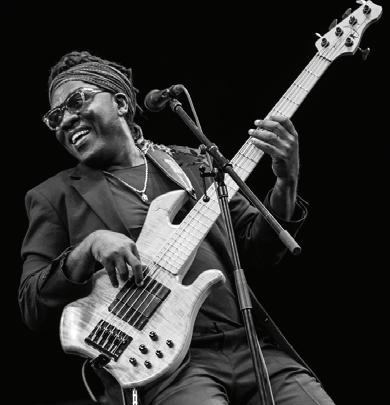


























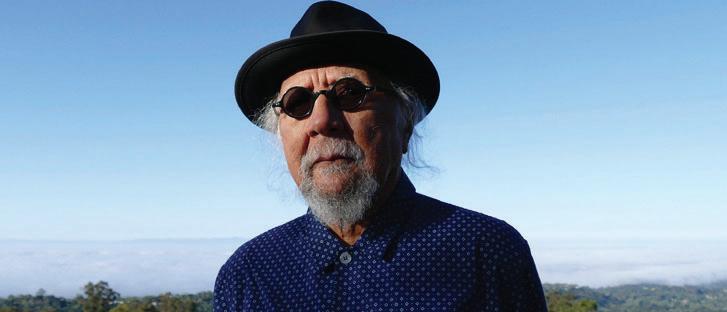





By Harish Narasimhan Ph.D. Candidate in Immunology, University of Virginia
The long-term effects of respiratory viral infections such as COVID-19 are a major public health burden. Some estimates suggest over 65 million people around the world
suffer from long COVID-19.
Efforts to better understand this condition, however, have been hampered by its ability to affect multiple organ systems, such as those involving the lungs, brain and heart. This is further complicated by the lack of animal models that can sufficiently mimic the disease.
Animal models, such as mice and rats, are a crucial tool that researchers use to study human diseases and develop treatment strategies. Although there are major differences between humans and animal models, the vast majority of our immune and organs systems function similarly. Such similarities in physiology have made significant health care
By Annette Regan Associate Professor of Epidemiology, University of San Francisco
The Food and Drug Administration approved and granted emergency use authorization on Aug. 22, 2024, for the newest, updated version of the COVID-19 vaccine. The Centers for Disease Control and Prevention quickly endorsed the new shot to protect against severe illness.
The 2024 summer wave of COVID-19 cases is a good reminder of why people need to stay up to date with their vaccines.
As the fall and winter seasons approach, the usual seasonal respiratory viruses, including flu and respiratory syncytial virus, or RSV, will also be on the rise. Vaccines are now available to help protect against these viruses.
The Conversation asked epidemiologist Annette Regan to explain why officials recommend that people get these shots over the coming months.
What strain is the new COVID-19 shot based on and why?
The COVID-19 vaccine has been updated several times since the original shot in 2020-21 to keep up with how the SARS-CoV-2 virus is changing.
discoveries, including those related to COVID-19, possible.
I am an immunology researcher in the Sun Lab at the University of Virginia. We study the role the immune system plays in respiratory viral infections such as influenza and COVID-19. In our newly published research, we developed a new mouse model to study long COVID-19 and found that blocking certain overactive immune cells can restore lung function.
New models, new targets Out team wanted to better understand the longterm effects of COVID-19 on the respiratory system. To do this, we worked to identify key features associated with lung scarring following COVID-19.
First, we examined lung samples from patients with long COVID-19. Although these patients were infected several months to years before the samples were taken, we found evidence of an overactive immune system in their lungs, particularly within areas that failed to fully repair themselves after infection.
Next, we aimed to
In September 2023, the CDC recommended that all people get the newly updated vaccine that was designed to protect against XBB.1.5, the variant that had been dominant in the U.S. that summer, regardless of whether they had received all recommended shots in the past.
Now, in August 2024, the XBB.1.5 variant is no longer around and has been replaced by the KP.2 and KP.3 variants, which make up more than 60% of variants currently detected.
Moderna and Pfizer both made updated formulations of the COVID-19 shot that target this new KP.2 variant. It is a monovalent vaccine, which means it includes only the KP.2 strain.
This strain was selected because it was the most common variant at the time the choice was made. Even when new variants such as KP.3 emerge, we researchers expect the updated vaccine to protect against the newer strains. For example, the 202324 vaccine was designed to target the XBB.1.5 strain, and studies showed that it continued to protect against the JN.1 variant that later emerged.
The CDC recommends a single shot for everyone 6 months and older, with some exceptions. Children 6 months to 4 years old who have not received any prior shots of COVID-19 vaccine still need two or three shots of the updated 2024-25 vaccine.

create a mouse model for long COVID-19 by comparing the pathology of mice infected with four different types of respiratory viral infections. Surprisingly, we found that mice infected with influenza virus, rather than the COVID-19 mouse models scientists currently use, best replicated the physical features of severe chronic lung disease. The reasons why infections from different respiratory viruses affect the lungs in
Adults 65 and older and children and adults with certain health conditions may require an additional shot as well. People who recently had a SARS-CoV-2 infection may consider delaying their shot for three months after the illness, since risk of reinfection is thought to be low during the months after infection.
How did the 2023 updated vaccine perform?
Recent studies have shown that people who received the 2023-24 vaccine were 54% less likely to develop symptomatic COVID-19 illness, 39% to 51% less likely to visit an emergency department or urgent care with COVID-19, and 50% to 53% less likely to be hospitalized with COVID-19 compared with unvaccinated people. The vaccine was most effective among those who had received their shot more recently.
What is the best timing for the shots?
COVID-19
hospitalizations and deaths have been rising since May 2024, with the highest rates seen in adults 65 and older and infants under 6 months old. Therefore, public health experts are recommending that people get the COVID-19 shot as soon as possible to protect against severe illness. Because infants
different ways are unclear. But preliminary evidence suggests it may be because each virus targets different types of cells “in humans and mice.” Additionally, since long COVID-19 is about the damage left behind after infection, it seems less important what virus causes the problem in our animal model than that the damage is similar to what we want to address in human patients.
younger than 6 months are not old enough to be directly vaccinated, COVID-19 vaccination during pregnancy is the best way to protect these babies. When it comes to the flu, cases and hospitalizations seem to rise steeply between November and December. Some years, however, such as the 2022-23 flu season, they start as early as October. It’s important to remember that vaccines do not offer immediate protection. You need about two weeks for your body to generate enough antibodies to offer protection. September or early October is a good time to get the flu shot to ensure you are protected in time. However, if you aren’t able to get the shot before November, it’s important to know that it is still helpful to get the shot as long as flu is around.
Is it OK to get both the COVID-19 and flu shots at the same time?
Getting the COVID-19 and flu shots together can certainly make it easier to get up to date with these recommended vaccinations. Data shows that getting the flu shot and the COVID-19 shot together is safe and effective. Some vaccine companies are working to develop a combined flu/ COVID-19 vaccine to reduce the number of shots needed. This vaccine still needs to be

Using our new mouse model, we were able to identify the presence of an abnormal cluster of cells in mice lungs – made up of the same dysfunctional immune and epithelial, or structural, cells seen in the lungs of long-COVID-19 patients. Additionally, we found that the uncontrolled activity of these immune cells in the lungs impeded structural cells from repairing themselves. It also hindered them from restoring gas exchange, the process of taking in oxygen and releasing carbon dioxide.
Importantly, when we blocked the activity of proteins associated with this overactive immune response, it reduced lung scarring and restored optimal lung function in mice.
Treating respiratory viral infections
Most approaches to addressing long COVID-19 rely on starting treatment early after infection. To the best of our knowledge, our study is the first to identify strategies to treat the respiratory symptoms of long COVID-19 after this chronic disease develops.
The drugs we tested in our study have already been approved by the Food and Drug Administration to treat severe COVID-19 and other inflammatory conditions. We hope our findings can spur further research on using these drugs to treat long COVID-19. Our work may have applications beyond long COVID-19. Growing evidence suggests that many respiratory viral infections, such as influenza, COVID-19 and respiratory syncytial virus, may result in chronic lung disease. Considering the four pandemics and even more respiratory viral epidemics that have occurred in the past 100 years, studying the cellular and molecular similarities between respiratory viral infections may be critical to how medical practitioners respond to future viral outbreaks. Harish Narasimhan receives funding from the National Heart, Lung, and Blood Institute at the National Institutes of Health, USA. This article is republished from The Conversation under a Creative Commons license.

approved by the Food and Drug Administration but could become available soon.
Who should get the RSV shot and when? RSV is another common respiratory virus that can cause severe illness in young children and older adults. There are two groups of people who should get one of the three currently available RSV vaccines: adults 60 years and older and pregnant people. The CDC recommends a single dose of either GSK’s AREXVY, Moderna’s mRESVIA or Pfizer’s ABRYSVO for all adults 75 years and older and adults between the ages of 60 to 74 who are at increased risk of severe RSV disease.
Unlike the COVID-19 and flu shots, additional RSV doses are not currently recommended, because research suggests that the vaccine offers protection for at least two RSV seasons. These vaccines are relatively new, however, and more data will be needed to see how long this protection really lasts. Additional doses may be recommended in the future.
The CDC recommends only Pfizer’s shot for people in weeks 32 to 36 of pregnancy between September and January. The Pfizer vaccine
is the only RSV vaccine that has been licensed and approved for use in pregnancy. These vaccines are different from the antibodies that can be given to infants at or after birth, called Beyfortus (nirsevimab). The CDC recommends one dose of nirsevimab for infants who are younger than 8 months old born during or shortly before their first RSV season. For some children who are 8 to 19 months old and are at increased risk of severe RSV disease, a dose of nirsevimab may also be recommended during their second RSV season. Both the RSV vaccine and nirsevimab offer safe and effective options for preventing RSV in young babies. Pregnant people should get advice from their health care professionals about which option is best for them. Annette Regan receives funding from the National Institutes for Health and the US Centers for Disease Control and Prevention. She has served on a Data Safety Monitoring Board for Moderna Inc. This article is republished from The Conversation under a Creative Commons license.

Taking place in the Cargill Gallery, the free exhibition celebrates Folwell’s revolutionary pottery Minneapolis Institute of Art announces latest exhibition, “O’ Powa O’ Meng: The Art and Legacy of Jody
Opening September 14, Mia’s latest exhibition focuses on Jody Follwell’s influential Native American art, which intersects with Contemporary and American art.
The Minneapolis Institute of Art (Mia), in partnership with The Fralin Museum of Art at the University of Virginia, presents “O’ Powa O’ Meng: The Art and Legacy of Jody Folwell” from Sept. 14, 2024 – Jan. 26, 2025 in the Cargill Gallery. The exhibiti focuses on Follwell’s influential Native American art, which intersects with Contemporary and American art.
Jody Folwell is a contemporary potter from Kha’p’o Owingeh (Santa Clara Pueblo, New Mexico) who is widely considered among the
most significant and influential clay artists of her generation. Folwell has revolutionized contemporary Pueblo pottery – and Native art more broadly – by pushing the boundaries of form, content and design.
She is the first Pueblo artist to employ writing and designs as personal, political and social narratives on her pottery.
The iconic works showcased within “O’ Powa O’ Meng” (“I came here, I got here, I’m still going” in the artist’s Tewa language) span the breadth of Folwell’s groundbreaking career and demonstrate the arc of her artistic development. The exhibition centers Folwell’s practice and situates her within the intersecting artistic contexts of Kha’p’o Owingeh, Native American
art, and Contemporary and American art more broadly.
“Over the past five decades, Jody Folwell’s avantgarde innovations have inspired other artists and the public,” said Katie Luber, Nivin & Duncan MacMillan Director & President at Mia. “We are so excited to celebrate her career with the Twin Cities community through the opening of this latest exhibition.”
“Collaborating with Mia to support the work of this trailblazing artist has been a meaningful opportunity to The Fralin as we strengthen our network of both artist and institutional partnerships. We thank the Terra Foundation for American Art for making possible this retrospective and its accompanying catalog,”
said Karen E. Milbourne, J. Sanford Miller Family director of The Fralin. “Jody Folwell is one of the most important and consequential Native potters in the United States.”
This exhibition was organized by the Fralin Museum of Art and the Minneapolis Institute of Art. This catalog and exhibition are made possible through support from the Terra Foundation for American Art. Major support for Mia’s presentation is provided by Lorraine R Hart. For more information on “O’ Powa O’ Meng: The Art and Legacy of Jody Folwell” and other upcoming exhibitions, visit new.artsmia.org.

By Sheila Regan MinnPost
Actor and audiobook producer Steve Hendrickson turns 70 this month as he gears up for his first major stage performance since 2019 and spends time in the studio preparing to release three new audio novellas through his company, Audio-Visceral Productions in October. He’s also dropping an Indiegogo campaign on September 15 for his biggest audiobook project yet— a multi-narrator audiobook production of Larry Millett’s epistolary novel, “Strongwood.”
A familiar face in Twin Cities theater, Hendrickson has performed at the Guthrie, Park Square, the Jungle, and many more local theaters, and has acted on stages across the country. His rich speaking voice also has brought him opportunities behind the microphone.
Early in his career, Hendrickson supplemented his theater career with voiceover work, but things changed in the early 2000s with the introduction of the internet and a SAG/AFTRA strike, both of which were part of “a big tectonic shift in the industry,” Hendrickson said.
Once upon a time, the Twin Cities had a very fertile and robust local market, according to Hendrickson, with numerous ad agencies based locally, creating work for Twin Cities actors. “The internet kind of changed that,” Hendrickson said. “Right at the same time that was happening, SAG/AFTRA went on strike, and that turned out to be a dicey decision, because a lot of the work went non-union and has not really recovered.
My voiceover career, at any rate, really went off a cliff.” Hendrickson found a new opportunity by way of producing. He got the idea while performing in a play by Minnesota playwright Jeffrey Hatcher, called “Murderers,” back in 2007. The three-person play features three actors— two women and one man— who come on stage and announce that they are murderers, then proceed to tell the story of their murder.
Performing the play in Cincinnati, Hendrickson got the idea that it could work as an audio piece. “While I was doing it, literally, while I was on stage, talking to the audience, I kept thinking this should almost be more effective if you could just listen to it, like you were sitting around a campfire,” he said. Hendrickson produced the audiobook (available on Audible), and after that, did another audio piece based on a different Hatcher script called “Three Viewings,” which takes place in a funeral parlor in a small Pennsylvania coal town. “It’s really sweet and funny and poignant, and I wound up doing those the same format— three people, each telling each telling about a 30 minute story connected to this funeral parlor, anIt was through Hatcher that

Hendrickson connected with local author Larry Millett.
Millett is a former architecture critic for the Pioneer Press, and has written a series of coffee table books on Minnesota architecture.
He’s also a mystery enthusiast, and has written numerous books about Sherlock Holmes in Minnesota, framed around actual historical events. “The Red Demon,” for instance, was based on the Hinckley forest fire of 1894. “Sherlock Holmes and the Ice Palace Murders,” is another; it takes place at the St. Paul Winter Carnival. Back in 2015, Hendrickson performed in Hatcher’s adaptation of that novel, produced at Park Square. And all the stories are subtly connected in some way.”
It was through Hatcher that Hendrickson connected with local author Larry Millett.
Millett is a former architecture critic for the Pioneer Press, and has written a series of coffee table books on Minnesota architecture.
He’s also a mystery enthusiast, and has written numerous books about Sherlock Holmes in Minnesota, framed around actual historical events. “The Red Demon,” for instance, was based on the Hinckley forest fire of 1894. “Sherlock Holmes and the Ice Palace Murders,” is another; it takes place at the St. Paul Winter Carnival. Back in 2015, Hendrickson performed in Hatcher’s adaptation of that novel, produced at Park Square.
Hendrickson acted in the stage performance and got to know Millett, and the two hit it off. “I remember one day I just sort of idly thought, who does the audiobooks of his novels?” It turned out, no one had. Hendrickson took on the project, now called The Minnesota Mysteries on Audible.
Currently, Hendrickson is recording Millett’s latest in the series, called “The Mysterious Tales of Old St. Paul,” three novellas all based in the late 19th century. At the heart of the stories is a character named Shadwell Rafferty— an Irish saloon keeper who solves mysteries. Sherlock Holmes is also a character in the stories. The book is being published by the University of Minnesota Press, and Audio-Visceral
Productions will be releasing the audiobook at the same time.
Meanwhile, Hendrickson continues to collaborate with Hatcher on theater productions as well, beyond their audio projects.
On October 9, Park Square opens “Holmes Poirot,” which Hendrickson and Hatcher wrote together. Bringing together two famed sleuths— Sir Arthur Conan Doyle’s character of Sherlock Holmes and Agatha Christie’s Poirot, the production also re-unites Bob Davis and Hendrickson together, who have played Sherlock Holmes and his sidekick numerous times together at Park Square. They are reprising those roles in the first act, with Davis playing Agatha Christie’s character, Hercule Poirot, and Hendrickson playing Poirot’s sidekick, Hastings, in the second act. “I think it’ll be a lot of fun,” Hendrickson said. “Mysteries never go out of style. They continue to be popular.”
While Hendrickson has been prolific in his audio acting career, he told me it’s been an adjustment to get back to stage acting after a number of years. Back in July, the actor did a workshop of “Holmes Poirot,” and it became clear that his voice was used to working with a mic. “The challenge for me is to build my voice back up to where it was when I was last on stage,” he said.
“I’ve been working on that every day. I take about a two hour hike and and run lines.”
Finally, Hendrickson is raising money for the seventh novel in Larry Millett’s series. The new novel is a departure for the author, Hendrickson said.
“It’s not really a novel at all. It’s basically called a dossier.”
The story is told through a collection of newspaper articles, telegrams, letters, and trial transcripts that paint a picture of a 1904 turn of the century in Minneapolis, where a young woman is on trial for shooting her lover in cold blood. “Larry and I decided it would be great if we could actually treat those as dramatic scenes, so that as you’re as you’re listening to the audiobook, when a trial transcript comes up, you hear the prosecuting attorney, you
hear the
you
the
the judge. And it’s
you
like a little one act play.” Hendrickson is hiring all union actors for the project, and is currently trying to raise a minimum of $8,000, with a full budget of $35,000. With 42 speaking characters, and over 60 trial scenes, it’s going to be largely a local cast, with a tentative recording date beginning around the first of the year.




























